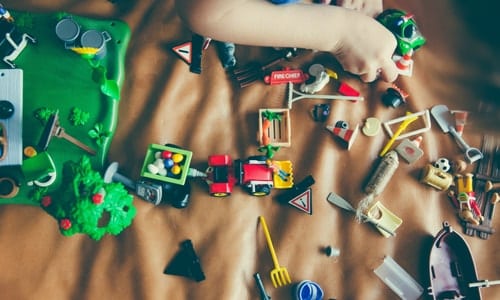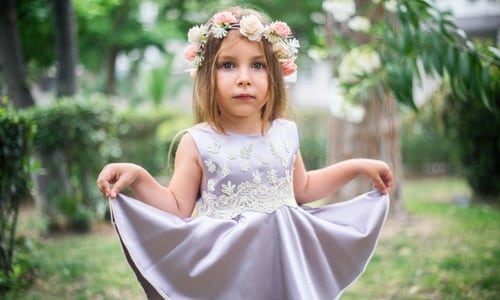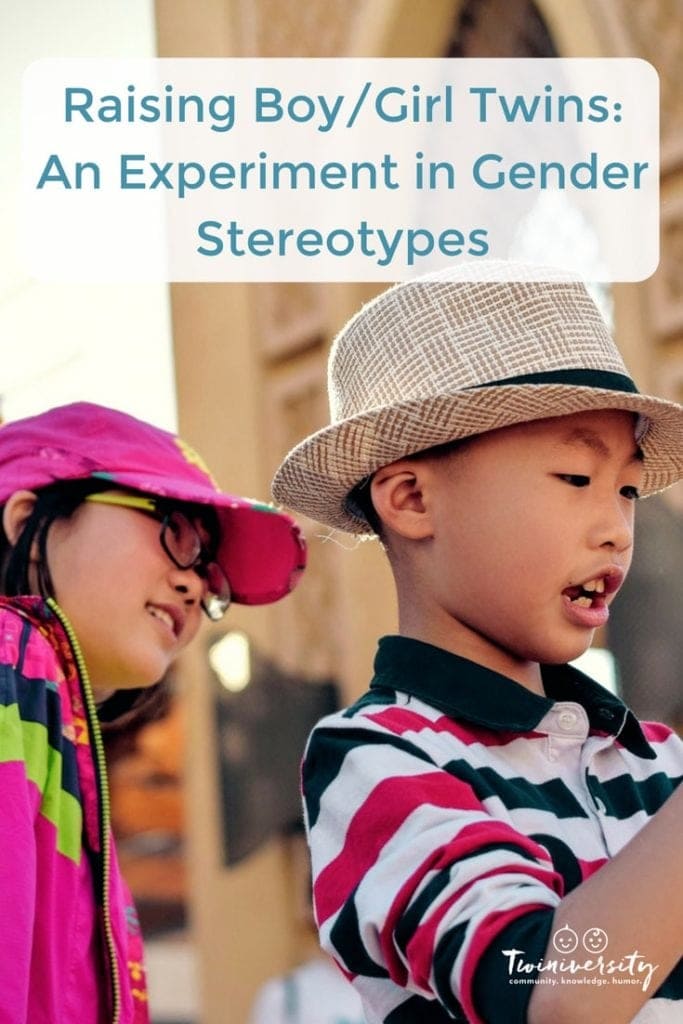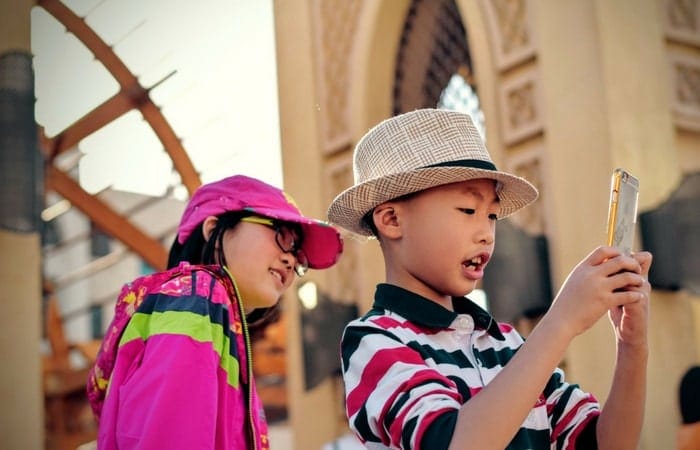Last updated on February 5th, 2024 at 05:19 pm
Being a parent of twins always offers a fascinating insight into child development and the nature/nurture debate: you have a ready-made psychology experiment with two people being raised in as identical an environment as possible.
And yet, we all know how differently they develop. The case of gender identity is no exception and watching my boy and girl twins grow from infancy into childhood afforded me the opportunity to see how much their interest in certain toys or activities fitted with our idea of the differences between boys and girls.
The results were mixed and interesting, but what I wasn’t prepared for was how the experience of breaking stereotypes is very different if you are a boy or a girl.
I began to notice real differences in choice of toys and activities when my two were older babies and very young toddlers, before stereotypes could consciously set-in (though, of course, I would be unaware of the ones I had unconsciously set!) While they each might have been given toys that were “girlish” or “boyish” the reality is that all toys were available to both of them all the time, and I was sure not to let any toy be out of bounds – they had free choice.
It was very interesting to see the times when they stuck to the stereotype completely, from a much younger age than I expected. My son was fascinated with trucks before he could talk. He would get excited and point them out on the road before we even had any truck toys for him (it was very unfortunate that this obsession continued during his tendency to pronounce the sound “tr-“ as “f-“…)
My daughter couldn’t have been less interested in them. She, on the other hand, would put stacking rings on her wrists and ankles and love to stare at the effect before she could even sit, and was utterly transfixed by her first pair of soft baby shoes. I remember joking that adorning herself seemed to be an innate trait!

So far, so stereotypical. However, my son showed far more preference for pushing a baby doll in its stroller than my daughter, and when she was given her first dress up outfit of a fairy dress, it was he who immediately put it on and loved it. He still loved all his trucks and trains but he also loved the dolls and dress-up.
My daughter’s favorite toy as a toddler was a large toy car that had been given to my son. She dragged it with her everywhere – even into bed. We have absolutely no idea where this love came from but she was far more interested in the car than any dolls she had been given.
Equally, she showed no interest in the role-playing toys like the toy kitchen, and my son enjoyed playing with those much more. Her favorite activities were always sensorial ones – playdoh, sand, and water, which are considered fairly gender neutral.
This was all very interesting, but I discovered as they went through toddlerhood to childhood that my attitudes towards the two were quite different. With my daughter, I felt proud that she wasn’t just into the pink versions of toys, and showed varied interests.
However, with my son, I would assume he would “grow out” of his interest in putting on a fairy dress or desire to have nail polish, and thought of it as a normal “phase” of childhood. In fact, he has grown out of some of these, but is that natural progression or pressure from what he sees around him?
Why do any of these things have to be just for girls? After all, in the 18th-century men wore make-up and high-heels, which now is considered very effeminate. When I stop and think about it, I realize that I had a very imbalanced attitude that mirrors the world around me. The reality is that it is far easier for my daughter to buck stereotype than it is for my son.

While in many ways my daughter is “girly” – she loves arts and crafts, is very interested in relationships and emotions, and is crazy about animals – she is also interested in many other things. She loves rock-climbing and all kinds of physical activity. She goes to science club and challenges boys to arm wrestling (she’s pretty strong). My son in many ways is a typical boy – he loves Legos, video games, and playing imaginary games with his friends involving superheroes and lots of battles.
On the other hand, he loves dressing up, playing with little kids and gets really into the romantic parts of the adventure books he loves. The thing is that while I am extremely proud of both of them for the people that they are, I know that my daughter will probably be admired by both peers and adults alike for bucking trends and gender stereotypes, whereas I worry that my son will be teased for doing the same thing.
The problem is, of course, the fact that the traits that have been associated with masculinity in the past – strength, a sense of adventure, risk-taking – are the traits that are still greatly admired in our society. Traits that have always been associated with femininity – sensitivity, love of family life, gentleness – are often relegated to a lower status and weakness.
In essence, for a girl to be into “masculine” traits is a step up socially, but for a boy to be interested in “feminine” traits is a step-down, whether it’s done consciously or unconsciously.
Just ask most people how they would feel buying a blue bike for a girl versus buying a pink one for a boy. Or if a parent would be as comfortable with their son dressing up as a girl character as they would their daughter dressing up as a boy. There is an inconsistency here that needs to be addressed.
So much great work has been done towards giving girls equal aspirations and opportunities, some attention should be given to allowing boys to express more “feminine” traits. Masculinity-as-machismo is still a status symbol and that needs to change, as it has not produced the best role models of manhood.
I urge you to give your boys and your girls a mix of “boy” and “girl” toys, let them explore what interests them, and rather than admire or worry about the choices they make, accept them as simple expressions of their personality. I think it can only create a kinder world.

If you are interested in breaking down the boy and girl twins divide with toys, check out Let Toys Be Toys (www.lettoysbetoys.org.uk) a UK campaign that works to challenge gender stereotypes in childhood, especially in toys, books, education, and the media. They have already encouraged quite a lot of change.

Isabelle Lee is a British mom to 9-year-old boy/girl twins. She lived in California with her husband and twins for four years and moved back to the UK in 2016, settling in the North of England. When she isn’t being a chauffeur/carer/cook/cleaner she writes for Twiniversity, Tamba (the UK’s multiple birth charity), Huffington Post, and on her blog perplexedparent.com. You can follow on Facebook.







